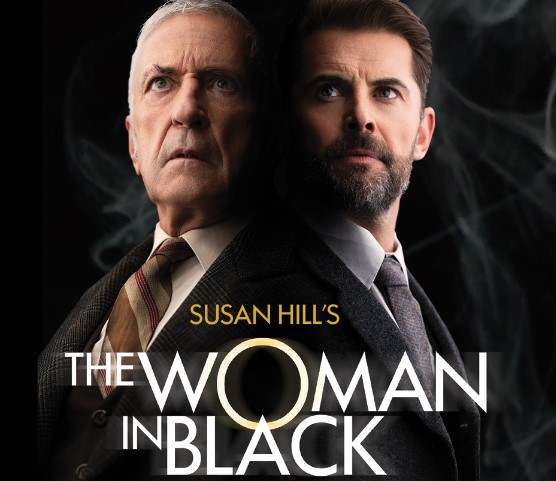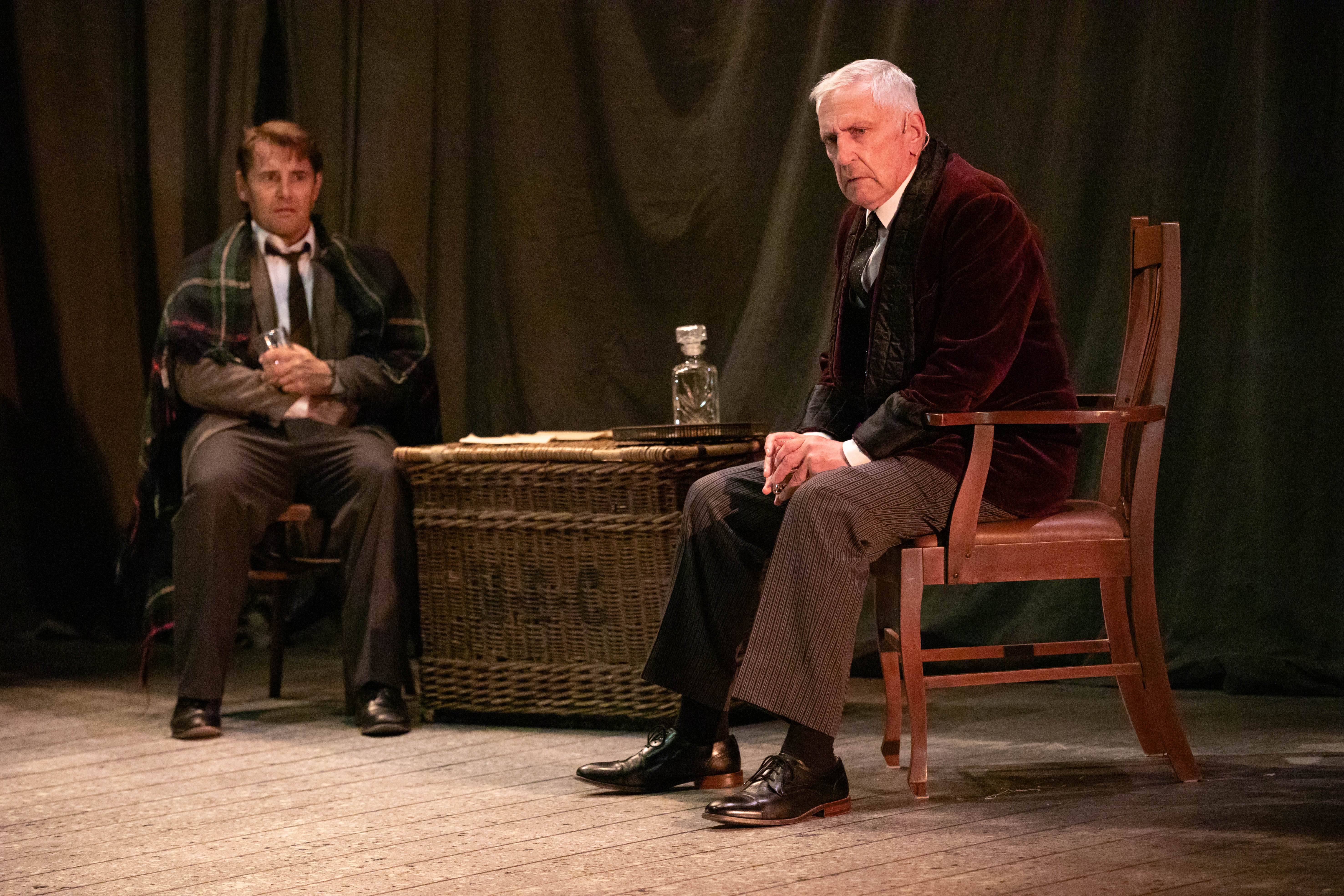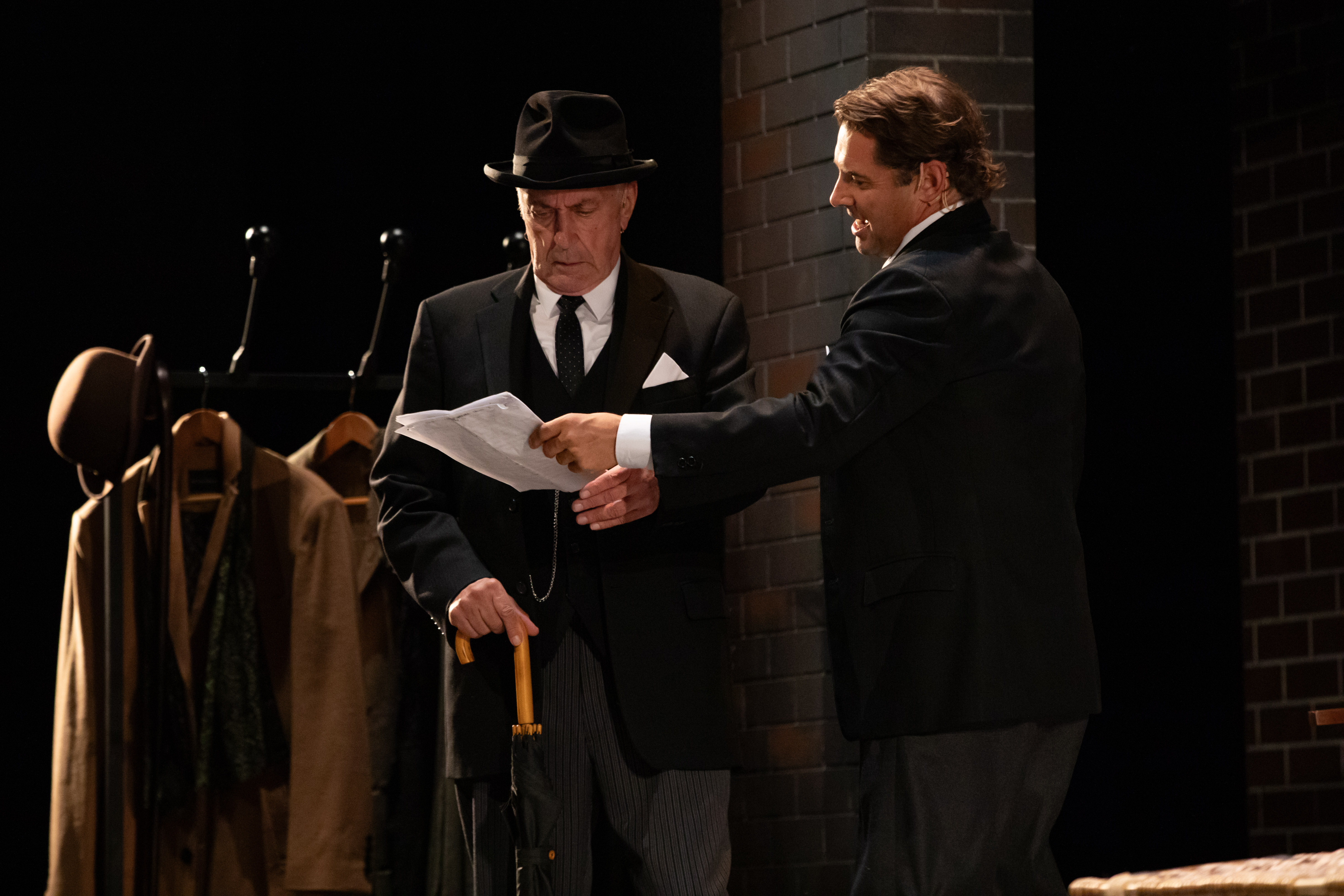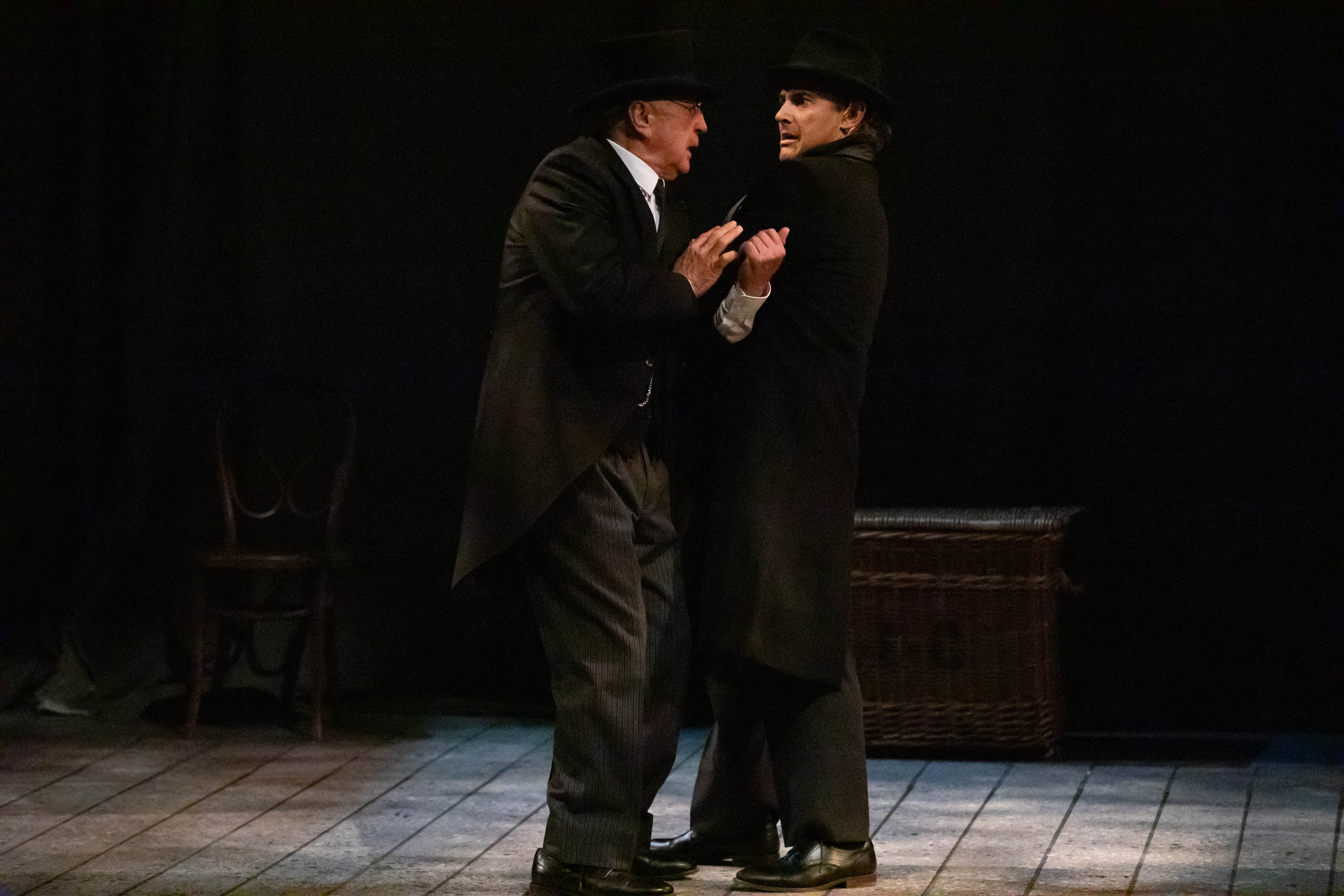
Reviewed by: Faith Jessel
The chills are irresistibly potent. A deliciously dark incantation of malice and foreboding. The Woman in Black maintains her horrible grip upon the Gothic thriller genre for 30 years, weaving a web of fear and ensnaring the next generation. It's not for the faint-hearted.
Brilliantly adapted by Stephen Mallatratt from Susan Hill's classic novel, this ripper of a production is a profound haunting that both fulfils and subverts audience expectations. Mallatratt’s genius lies in creating ‘The Woman in Black’ as a play within a play, a clever conceit that demands two extraordinary actors switch and play multiple roles. Director Robin Herford fuses suspense and stellar performances to craft a deeply unsettling experience.

A stage stripped of its spectacle naturally possesses an uncanny ability to evoke feelings of nostalgic sorrow. Swathed in grey, echoing with faint whispers of the past, heavy with the weight of what has been. Silence and stillness fill the air, as time stands still in this theatre, within a theatre. It is the perfect premise for what transpires.
Without the preliminary cues of lights down and the audience settling, a man abruptly shuffles into the empty space, script in hand, and mumbles through his lines. The audience is momentarily perplexed. We’re reminded that this is the way many actors, rehearsals, and then performances begin.
Arthur Kipps is crippled by his obsession with a curse that he believes has been cast over him by the spectre of a woman, dressed in black, always hidden in the shadows. He has enlisted a cocky, upstart actor to help him tell his story in the hope of exorcising this terrifying burden, so he can finally sleep without nightmares.

We then accompany young Kipps, on a lonely journey to an old manor house, where he is tasked with settling the deceased estate of Mrs. Drablow. Together, we unravel the mystery of her tragic life, marked by the loss of a child and her sister, Jennet, whose grief and pain ultimately led to a devastating outcome. As the night wears on, this tale of dread draws the actor - and the audience - into a world of the unspeakable.
This macabre descent is more psychologically manipulative than graphically disturbing. Suggestive horror lies in its ability to tap into the darkest corners of the human mind where our own fears and anxieties complete the picture. It's the little things that really get to you. A bump in the night. A door swings open by itself. An empty rocking chair sways ominously. And a silhouette lurks on the staircase. What secrets does the umbrage hide?
A ghost story succeeds when it makes you feel vulnerable, blurring the boundaries between stage and auditorium. Something could creep up or happen at any moment.
The buzz of the opening night audience quickly subsided, leaving the crowd so absorbed and afraid to stir that, at times, you could hear a pin drop.
The title character is briefly glimpsed, but her menacing presence is deeply felt throughout. When she does appear, the impact is breathtaking. At times she seems to almost float. You then catch yourself in the throes of anxious laughter, worrying where she is, when she'll appear again, subtly scanning the stage and theatre with an ever growing sense of unease.

This is most tangible in the expert use of silences that ratchet up the tension. But while there are plenty of spine-tingling moments, there are also unexpected flashes of much needed levity, artfully balancing the chills with charm.
The chemistry between the two exceptional leads is undeniable. Restrained and riveting, it is a captivating dual performance. With minimal props and costumes, they skillfully move between a multitude of settings and scenarios. John Walters is sensational in his range, showcasing a versatility that's rare and remarkable. With a quick change of a hat or accent, he transforms into an array of vivid and commanding characters.
Daniel MacPherson as The Actor, oozes charisma as he patiently coaches Kipps in the art of stagecraft. As rehearsals move forward, he masterfully morphs back to 1926 as the young Kipps, his focus never wavering as he holds space for the unwinding story. The audience breathes with him as the intensity slowly builds towards the unbearable conclusion.
The combined forces of light, sound and some exceptional special effects become the fourth character, conjuring entire landscapes and physical entities in a masterful feat of visual storytelling. The ingenious soundscape is an auditory masterstroke, perfectly complementing an exquisite lighting design. The use of flickering matches, lamps, and torches casts disquieting shadows and creates inky voids and corners as a tumbling veil of sinister fog completes the gothic tableau.
Those familiar with this genre may anticipate what awaits, but true horror often lies in having one's worst fears confirmed. What resonates the most, are themes of isolation, grief and loneliness, echoes of the past and, as we should expect from a ghost story - fear. It seeps deeply into our psyche, evoking a visceral response. Prepare to be held captive by its unrelenting hold.
Thrilling, unnerving and incredibly immersive, The Woman in Black, truly does haunt. Don't miss it.
‘The Woman in Black’ plays at the Theatre Royal, Sydney, until August 17th. See https://thewomaninblack.com.
